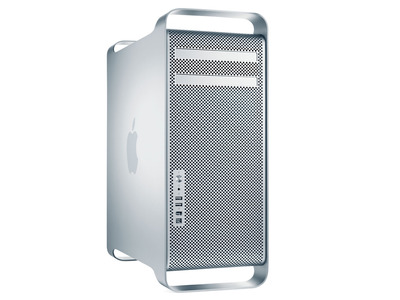First post, by feipoa
- Rank
- l33t++
I have an original MacPro 1,1 from 2006. It has been heavily upgraded and runs rather fast with the modern internet. The specs are as follows:
- Ubuntu 18.04 LTS running on Samsung 870 EVO SSD
Mac OS X El Capitan 10.11.6 running on Seagate Firecuda SSHD ST1000DX002-2DV1, 7200 rpm, 8 GB NAND, 64 MB cache
Mac OS X Lion 10.7.5 also running on the Seagate Firecuda SSHD
The original rEFIt is used as the boot loader
16 GB ECC 667 MHz FB-DIMM memory (can be upgraded to 64 GB)
UEFI firmware upgraded to 2,1 (required for the CPU upgrade)
2x Intel Xeon X5365 quad core 3.0 GHz CPUs for a total of 8 cores
Radeon HD5770 w/512 MB (Mac version)
CalDigit Fasta-6gu3 Pro x4 PCIe expansion card (2x USB 3.1, 2x SATA 3.0, 2x eSATA)
The CalDigit was my most recent acquisition. It is the only USB card I have tested on this system which has worked properly in multi-lane mode. It nearly doubled my USB 3.x throughput compared to a Fresco Logic FL1100 x1 card, e.g. from 201 MB/s read to 370 MB/s read, and 172 MB/s write to 263 MB/s write. Similarly, the CalDigit's SATA 3.0 controller more than doubles the throughput of the Mac's onboard SATA 2.0 controller, e.g. from 233 MB/s to 553 MB/s read and 140 MB/s to 492 MB/s write. The problem is that when I connect either the Firecuda SSHD (Mac OS) or the Samsung SSD (Ubuntu) to the CalDigit expansion card, which is touted for having Mac support, I am unable to boot either operating system.
The firmware doesn't seem to know to look for HDDs on the expansion card. Has anyone been able to find a work around for this? At present, the best I can have is a storage SSD connected to the CalDigit. Maybe I need an expansion card with its own BIOS?
Edit:
According to the CalDigit website, the FASTA-6GU3 Pro supports booting, even with the older Mac OS X 10.7. https://archive.caldigit.com/fasta-6gu3/
In the FAQ, https://archive.caldigit.com/fasta-6gu3pro/ , it says all 4 SATA ports are bootable, but mentions starting with 10.8.4 no drivers are required.
So perhaps the issue is with rEFIt not seeing the CalDigit card. rEFIt is installed on the Mac OS X 10.7.5 partition (or perhaps in the EFI partition?). Unfortunately, support for rEFIt is gone and documentation pretty shabby. But on the other hand, I recall that Ubuntu will boot without the MacOS HDD installed, so this doesn't explain it. Seems like I may need to figure out how to tell rEFIt how to boot to a HDD from the CalDigit and also how to tell Ubuntu to boot from the CalDigit. Anyone know how this is accomplished? Research on adding expansion card boot support to rEFIt doesn't look promising: http://refit.sourceforge.net/help/multiple_disks.html
Multiple Internal Disks […]
Multiple Internal Disks
Booting Windows or Linux from the second (third, fourth, ...) internal hard disk through rEFIt currently does not work as expected.
According to Apple’s Boot Camp FAQ any internal disk works, so you may be able to boot from the second disk using the built-in boot menu. Hold down the Option key during startup to activate that boot menu.
It may be possible to properly support booting from the second disk in rEFIt, but the author currently lacks a suitable test system. If you can help investigate this and are willing to test patched rEFIt builds, please get in touch.
and http://refit.sourceforge.net/help/usb_disk.html
Note: The following applies not just to USB hard disks, but to any storage device that is not considered "internal". That includ […]
Note: The following applies not just to USB hard disks, but to any storage device that is not considered "internal". That includes USB flash drives, SD cards and other memory cards, as well as hard drives attached through Firewire or other connections.
Booting Windows or Linux from an external disk is not well-supported by Apple’s firmware. It may work for you, but if it does not work, there is nothing rEFIt can do about it.
Apple’s Boot Camp FAQ states that you can only install Windows on internal hard drives.
Note that at least Windows XP needs special patches to successfully boot from a USB or Firewire drive. That’s because it normally re-initializes the driver stack during the boot process in a way that disrupts its own access to the boot drive.
Plan your life wisely, you'll be dead before you know it.
